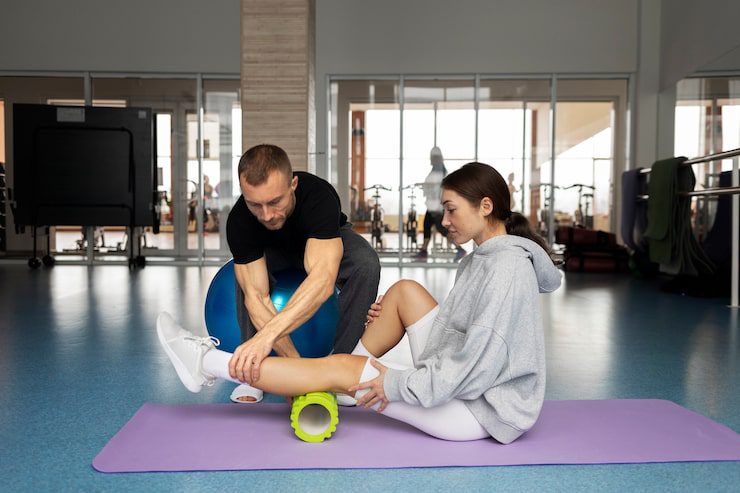In order to perform at their peak, athletes continuously challenge their bodies. Whether competing professionally or pursuing personal fitness goals, the physical demands placed on the body are significant. To meet these challenges and stay healthy, athletes need proper guidance and care. To ensure that athletes can train efficiently, recuperate safely, and perform at their peak, a sports physical therapist is essential. Their work goes far beyond helping after an injury. They focus on prevention, performance optimization, and long-term well-being.
The Role Of A Sports Physical Therapist
One medical specialist who focuses on treating and preventing injuries related to sports is a sports physical therapist. They are trained to assess movement patterns, muscle strength, flexibility, and biomechanics. This allows them to design specific programs tailored to the unique needs of each athlete. The therapist’s goal is to ensure that the body functions efficiently during training and competition. By identifying potential weaknesses or imbalances early, they can help athletes avoid injuries before they occur.
Sports physical therapists also work closely with coaches and trainers. A comprehensive approach to athletic performance is made possible by their combined experience. This collaboration ensures that training routines are balanced and safe. For example, a therapist might notice that an athlete’s repetitive movement in one sport places too much strain on a particular joint. Adjusting the training plan can prevent long-term damage and improve performance.
Preventing Injuries Before They Happen
Prevention is one of the most important aspects of sports physical therapy. Many injuries occur because of poor movement mechanics, muscle imbalances, or overtraining. A physical therapist evaluates these risks through movement screenings and functional tests. Once potential issues are identified, the therapist develops corrective exercises to address them.
For example, runners often suffer from knee pain due to weak hip muscles or improper running form. A sports physical therapist can teach techniques to improve alignment and strengthen supporting muscles. Similarly, athletes in contact sports may benefit from stability exercises that protect the shoulders and knees from sudden impact. By focusing on prevention, athletes can spend more time training and less time recovering from injuries.
Speeding Up Recovery After Injury
Despite the best efforts, accidents can still happen. When they do, a sports physical therapist becomes an essential part of the recovery process. They guide athletes through rehabilitation in a way that ensures healing without compromising future performance. Unlike general physical therapy, sports therapy considers the demands of athletic activity. The therapist tailors rehabilitation exercises to match the sport’s specific movements.
For instance, a basketball player recovering from an ankle sprain will need to regain not only strength but also agility and balance. A sports physical therapist will use sport-specific drills to restore full function. Their expertise helps prevent re-injury and allows athletes to return to competition with confidence.
In many cases, therapists also use advanced tools such as ultrasound therapy, resistance bands, and proprioceptive training. These methods accelerate tissue repair and improve joint stability. In addition to healing the injury, the objective is to safely and successfully return to top performance.
Enhancing Athletic Performance
Beyond injury treatment and prevention, sports physical therapists help athletes enhance their performance. By analyzing how the body moves, they identify small inefficiencies that can affect speed, power, and endurance. Correcting these details can make a significant difference in competitive outcomes.
For example, improving the range of motion in a swimmer’s shoulders or increasing the flexibility in a sprinter’s hamstrings can translate into better performance times. Therapists use techniques such as manual therapy, dynamic stretching, and neuromuscular training to optimize movement. This scientific approach ensures that athletes get the most out of every training session.
In addition, sports physical therapy can help with recovery between training sessions. Athletes who train intensely often experience muscle soreness and fatigue. Regular sessions with a physical therapist improve circulation and reduce tension, allowing the body to recover faster. This makes it easier to maintain consistency in training and prevents burnout.
Supporting Long-Term Health
The career of an athlete depends heavily on maintaining physical health over time. Even in the absence of serious injuries, repeated stress can cause tendons, muscles, and joints to deteriorate. Sports physical therapists help athletes manage these issues and extend their careers.
They help athletes maintain general body balance, educate them on posture and movement efficiency, and teach them effective warm-up and cool-down techniques. This support is not limited to professional athletes. Recreational players and fitness enthusiasts can also benefit from understanding how to move safely and efficiently.
Building Confidence And Mental Strength
Physical recovery and performance are deeply connected to mental health. When an athlete is injured, it can affect confidence and motivation. A sports physical therapist provides encouragement and helps athletes regain trust in their bodies. This psychological support is often as important as the physical treatment itself.
Knowing that a professional is guiding the process helps athletes stay focused on progress rather than fear of re-injury. The therapist’s reassurance and structured approach build confidence and promote a positive mindset, which directly contributes to better performance on the field.
Final Thoughts
Every athlete, regardless of level, benefits from the expertise of a sports physical therapist. Their work ensures that the body remains resilient, strong, and capable of meeting the demands of rigorous activity. From preventing injuries to enhancing performance and supporting mental well-being, they play an indispensable role in an athlete’s journey. Investing time in regular sessions with a sports physical therapist is not just about treatment but about developing a sustainable approach to health and performance. For anyone serious about their sport, having a trusted therapist on their team can be the difference between short-term success and long-term excellence.



































